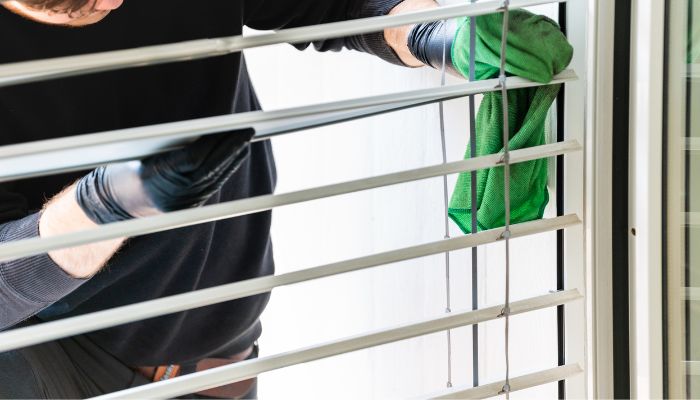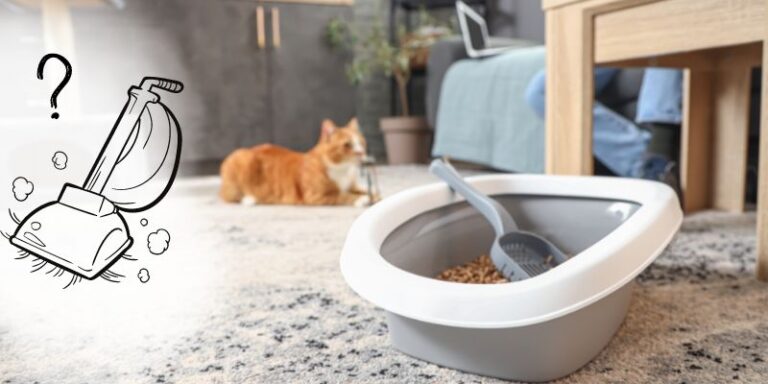Achieving streak-free windows is not only important for aesthetic purposes but also for maintaining the longevity of the windows. Streaks left behind after cleaning can be frustrating and may even cause you to have to clean the windows more frequently. Fortunately, there are several steps you can take to clean your windows without leaving any streaks.
How to Clean Windows Without Leaving Streaks?

Step 1: Choose the Right Tools
The first step is to select the right cleaning tools. Using a microfiber cloth or a squeegee is key to getting the job done right. Microfiber cloths are soft, absorbent, and gentle on the window surface.
They are also highly effective in removing dirt and grime without leaving any streaks. Squeegees, on the other hand, are ideal for cleaning larger windows as they allow you to quickly and easily remove water and cleaning solution from the surface.
Step 2: Prepare Your Cleaning Solution
The next step is to prepare your cleaning solution. There are many methods to make DIY window washing solutions. You can create your own homemade window cleaning solution by mixing equal parts water and white vinegar in a spray bottle.
Alternatively, you can purchase a commercial glass cleaner that is specifically designed to clean windows. When using a commercial cleaner, be sure to read and follow the manufacturer’s instructions carefully.
Step 3: Start Cleaning
Once you have your tools and cleaning solution ready, it’s time to start cleaning. Begin by spraying the cleaning solution onto the window surface. Be careful not to oversaturate the window with the cleaning solution, as this can lead to streaks. Next, use your microfiber cloth or squeegee to wipe away any dirt or grime.
For larger windows, it’s best to use a squeegee to remove the cleaning solution, starting at the top of the window and working your way down. Wipe the blade of the squeegee with a clean cloth after each stroke to prevent streaks.
Step 4: Buff and Dry
After cleaning, use a clean, dry microfiber cloth to buff the window and remove any remaining moisture or streaks. Pay special attention to the edges and corners of the window, as these areas tend to collect more moisture.
If you notice any streaks or spots, go over those areas again with your cloth or squeegee until they are completely clean and streak-free.
Are the Types of Windows Affect Your Cleaning Process?

Yes, the type of windows can vary and may require different cleaning techniques to avoid streaks. Different types of windows may have unique features or materials that require special care and attention when cleaning.
- For example, if you have double-paned windows, it is important to avoid using too much water or cleaning solution as this can cause the seal between the panes to break. Tinted windows may require specific cleaners that are safe for the tinted film, and leaded or stained glass windows may require a gentle cleaning approach to avoid damage.
- The size and shape of your windows can also impact the cleaning process. Large windows may require the use of a squeegee to remove excess water and cleaning solution, while smaller or intricate windows may require a specialized cleaning tool to reach all the nooks and crannies.
- To ensure that you are cleaning your windows safely and effectively, it is important to take into account the specific features and materials of your windows and adjust your cleaning technique accordingly. By doing so, you can avoid streaks, damage, or other issues that may arise from improper cleaning methods.
What Time Should I Consider for Window Cleaning? And Why?

When cleaning windows, it is best to choose a time when the sun is not shining directly on them. This is because the heat from the sun can cause the cleaning solution to dry too quickly, leaving behind streaks on the glass.
- The ideal time to clean your windows is on a cloudy day or when the sun is not directly shining on them. This will give you more time to work with the cleaning solution and ensure that it is properly applied and removed from the glass.
- It is also important to avoid cleaning windows during times of high humidity. High humidity can make it more difficult to achieve streak-free windows, as the moisture in the air can cause the cleaning solution to evaporate too quickly.
- By choosing the right time of day to clean your windows, you can ensure that the cleaning solution has enough time to work its magic and that you achieve streak-free results.
How to Remove Hard Water Stains From Your Windows?

If you have applied a cleaning solution to your windows to remove hard water stains and find that the stains are still present, there are a few steps you can take to address the issue.
Method 01
Try applying the cleaning solution again, but this time leave it on the windows for a longer period of time. Hard water stains can be stubborn and may require more time to dissolve and break down.
Be sure to follow the instructions on the cleaning solution bottle and let the solution sit on the window for the recommended amount of time before wiping it off.
Method 02
If the stains still persist, you can try using a commercial cleaner specifically designed for hard water stains. These cleaners often contain stronger chemicals that can dissolve the minerals in the stains more effectively. Be sure to follow the instructions carefully and wear protective gloves and eyewear when using these products.
Method 03
If none of these methods work, you may need to seek the help of a professional window cleaner who has access to specialized equipment and cleaners designed to remove stubborn stains.
In summary, removing hard water stains can be challenging, but by trying different cleaning methods and being patient, you can achieve the desired results and maintain the cleanliness of your windows.
How to Clean High Windows? Safe Tips for You

Cleaning high windows can be a daunting task that requires proper planning and safety measures to avoid accidents and injuries. While having clean windows can enhance the appearance of your home or office, it’s essential to take precautions to ensure your safety when cleaning windows in high places.
Below we noted some tips on how to clean high windows safely. By following these guidelines, you can effectively clean high windows without compromising your safety.
Use the right equipment
To clean high windows, you’ll need a sturdy ladder, a squeegee, a bucket, a cleaning solution, and a rag or towel. Make sure the ladder is tall enough to reach the windows without overreaching or leaning to the side.
Wear the right clothing
Wear comfortable, non-slip shoes and avoid loose-fitting clothing that can get caught on the ladder or window frames. Consider wearing gloves to protect your hands from the cleaning solution.
Use a safe cleaning solution
Avoid using harsh chemicals that can damage the windows or harm your health. Instead, you can use a homemade window cleaner or choose a commercial window cleaner.
Secure the ladder
Place the ladder on a flat, stable surface and secure it to prevent it from slipping or tipping over. Have a spotter hold the bottom of the ladder to provide extra stability.
Clean in sections
Clean the windows in sections, starting at the top and working your way down. Use the squeegee to remove the cleaning solution and water, and wipe the edges with a rag or towel.
Take breaks
Cleaning high windows can be physically demanding, so take breaks as needed to avoid fatigue or injury.
Note: Cleaning high windows safely requires the right equipment, proper planning, and safety measures. By following our expert tips, you can ensure that your windows are sparkling clean without putting yourself at risk of injury.
Conclusion
Cleaning windows without leaving any streaks is a simple process that requires the right tools, cleaning solution, and technique. Although there are many ways and schedule for your window like seasonal window and gutter cleaning, our outlined steps help you to keep your windows looking clean and sparkling for longer periods of time while avoiding the frustration of stubborn streaks.



